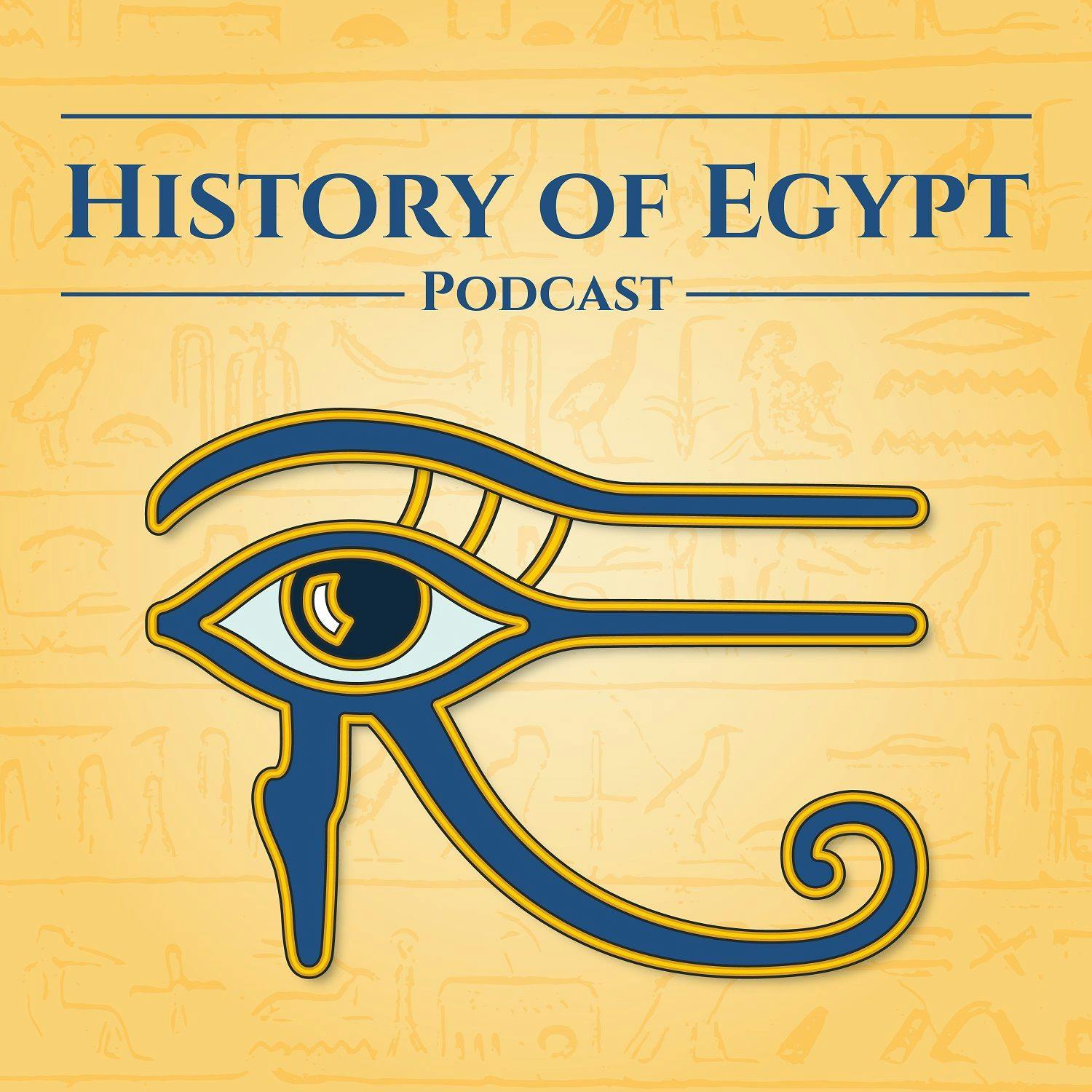The History of Egypt Podcast
Ancient Egypt, from Creation to Cleopatra. This podcast tells the story of pharaonic Egypt "in their own words." Using archaeology, ancient texts, and up-to-date scholarship, we uncover the world of the Nile Valley and its people. Hosted on the Airwave Media Network.
Ramesses' Wild West with Prof. Steven Snape

Heart of Darkness at Zawiyet Umm el-Rakham. Far from the Nile Valley, on Egypt’s northern coastline, Ramessid soldiers and civilians constructed a significant fortress to control the maritime roads. This remote garrison faced off against Libyan tribes coming from the far west (e.g. the Meshwesh of Cyrenaica), traded with Mediterranean merchants, possibly dealt with marauding pirates and Sea Peoples, and built a life for themselves on the western frontier. Alas, it wasn’t all beaches and bonhomie, as soldiers like Nebra, the commander, would learn…
Prof. Steven Snape is the author of many books and articl...
NSFW Not Safe for Water (Did Pharaohs Masturbate into the Nile?)
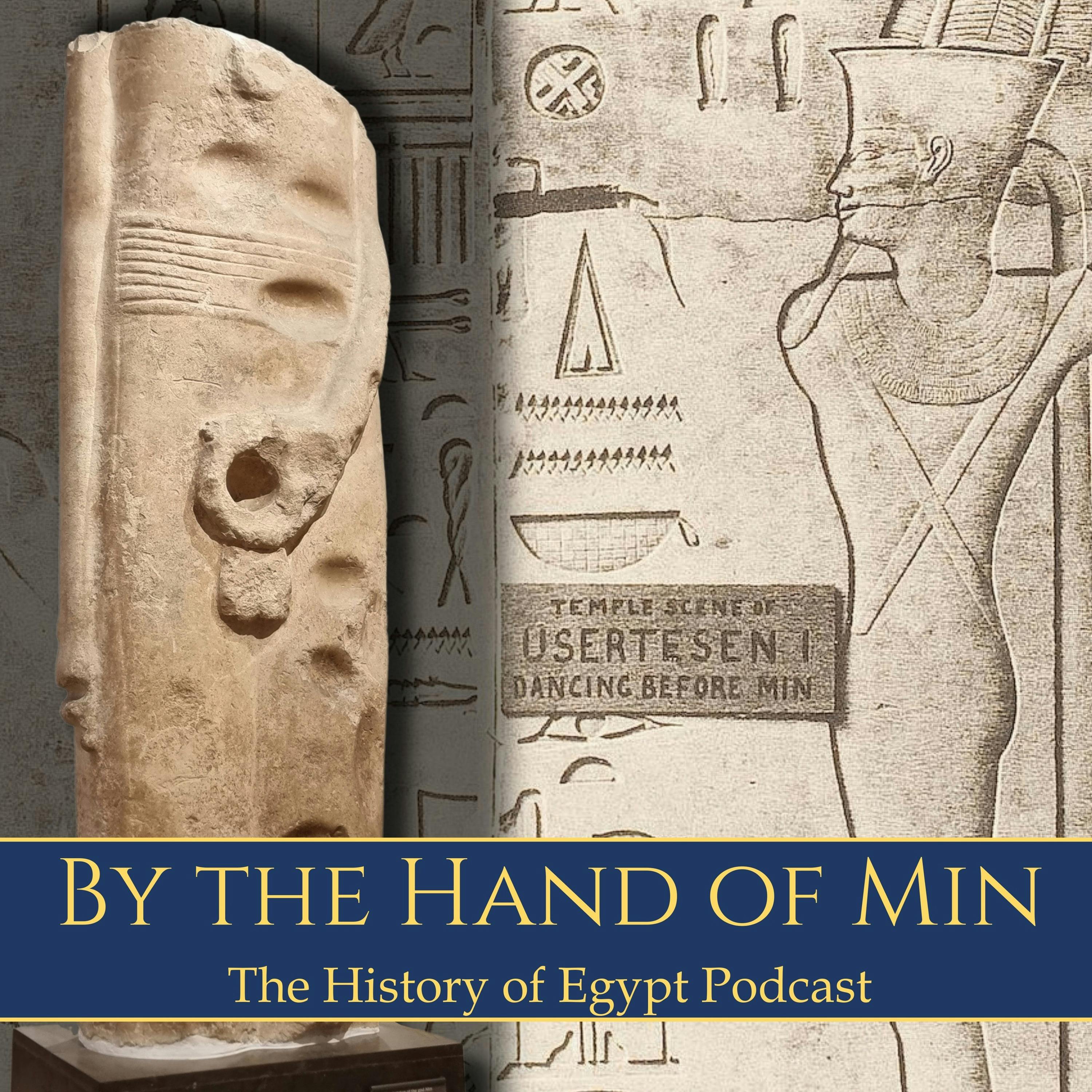
Explicit content. There's a factoid floating around on the internet. It claims that, to ensure fertility and good harvest, pharaohs would annually masturbate into the River Nile. This claim is total bubkis, but where did it come from? Which deities and myths were most closely associated with such concepts? In this mini episode, we explore the factoid and its potential origins.
Great gods of fertility and Creation:
Allen, J. P. (1988). Genesis in Egypt: The Philosophy of Ancient Egyptian Creation Accounts.
Epigraphic Survey. (1940). Medinet Habu, Volume IV. Festival Scenes of Ramses III. Available free...
Hapi Days (or, Ramesses in DeNile)
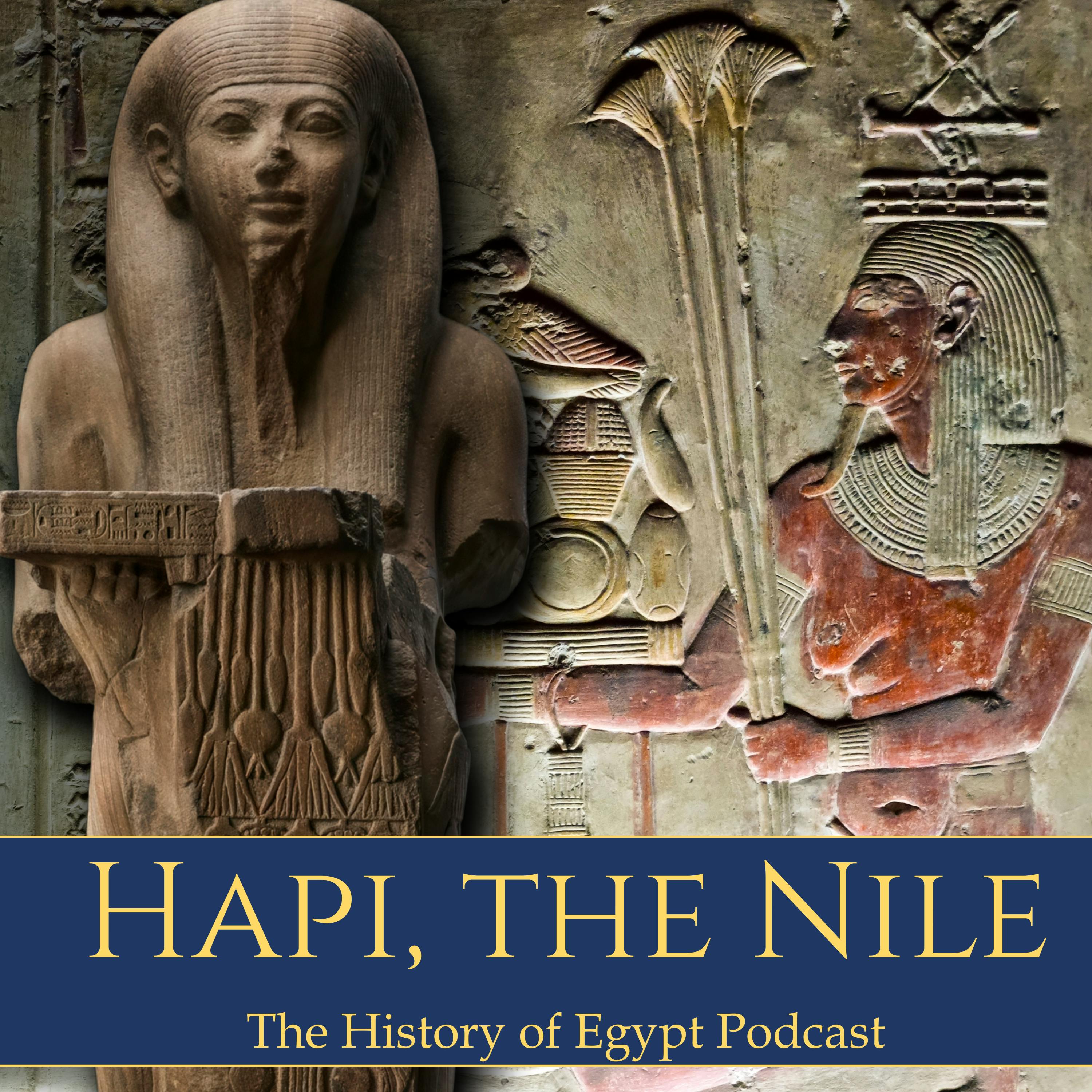
Hapi was Egypt. The life-giving waters of the annual flood (inundation) were his work; and thanks to these waters, Egypt flourished, its people were fed, the gods received their offerings, and the social order was maintained. From the New Kingdom, papyrus and ostraca record songs/poems to the river god, called "Praise (dua) of Hapi." From the days of Ramesses II, we also have elaborate proclamations to the god and his blesings...
A Hymn to Hapi (excerpt)
Hail to you Hapi, who comes forth from the earth,
Who arrives to give life to...
Scent of a Mummy: Smells and Pleasure in ancient Egypt, with Dora Goldsmith

What did ancient Egyptians like to smell? Did they use any narcotics in their day to day lives? And what do mummified bodies smell like? Today, I'm pleased to welcome Dora Goldsmith to the podcast.
Dora Goldsmith is a PhD-candidate at the Freie Universitat in Berlin, Germany. Specialising in ancient smellscapes, Dora explores how the ancient Egyptians perceived and described the scent of their world. Along the way, Dora introduces us to the favoured perfumes and flowers used by the ancients, some of their “recreational” substances, and how mummified bodies smell today.
Publications by Dora Gold...
Writing Kadesh and the Podcast on YouTube
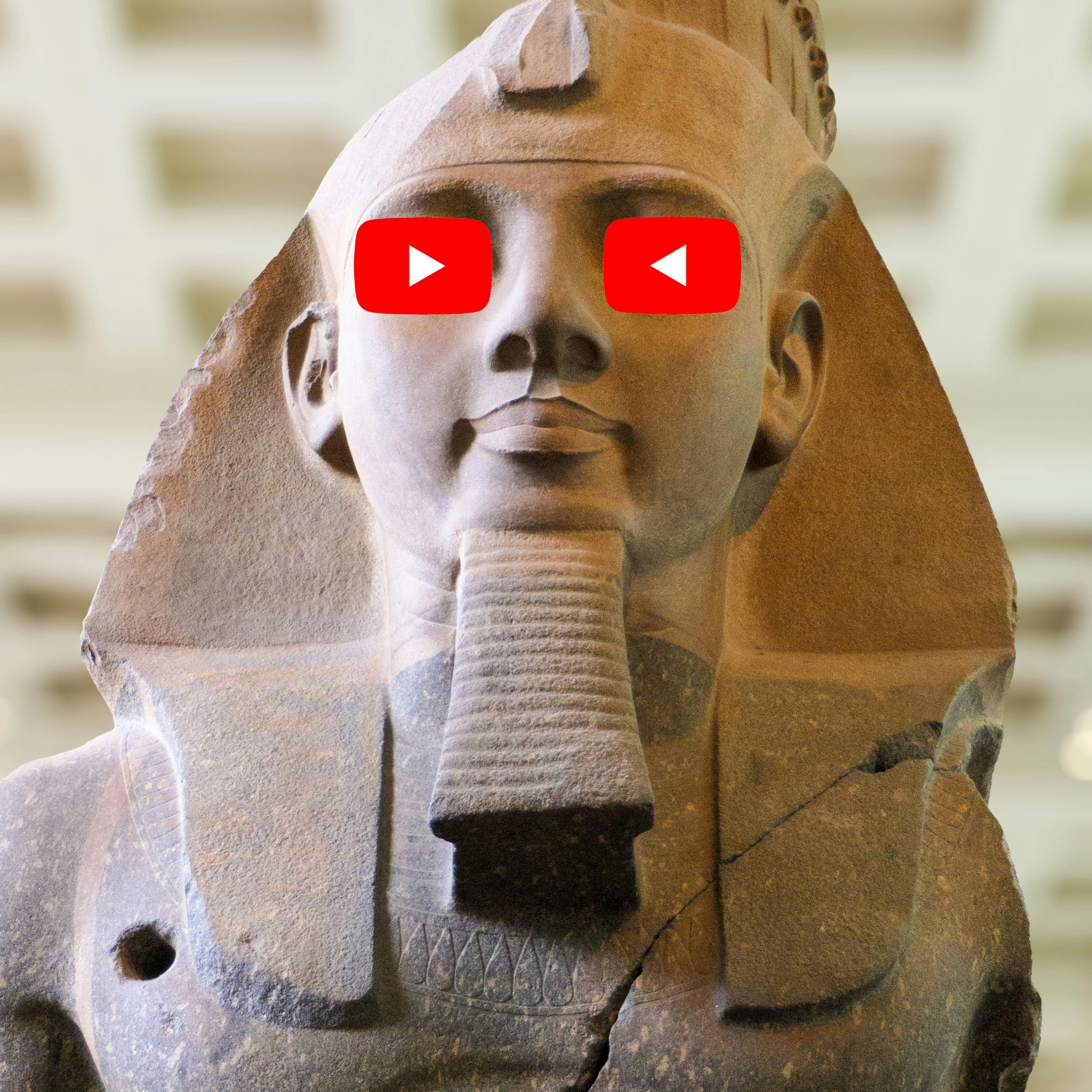
We're joining YouTube! After many years of on-off effort, I'm finally putting podcast episodes in video form up on my YouTube channel.
Also, a quick update on the narrative as a I prepare the Battle of Kadesh...
Follow us on YouTube at https://www.youtube.com/@ancientegypthist
Massive thanks to Amr Saleh for taking on the editing duties. I hope you'll all join us on an exciting journey to bring more ancient Egypt to you(tube).
Learn more about your ad choices. Visit megaphone.fm/adchoices
Egypt Tour 2026 March, Come Sail Away with Me (and Ramesses)
Hello everyone, it’s that time again! In March of 2026, we’re offering a new itinerary in the Nile Valley. This one is called the New Kingdom Cruise. It lasts for ten days, with a special focus on the south, the monuments of Elephantine (Aswan) and Lake Nasser. We ride a cruise boat, organised by Ancient World Tours, and visit monuments of Thutmose III, Sety I, Ramesses II, and even the Roman Emperors.
For bookings follow this link and use the password KALABSHA https://www.ancient.co.uk/holiday/history-of-egypt-podcast-2026-the-nubian-cruise/
Learn more abou...
211: Ramesses II The First Campaign of Victory
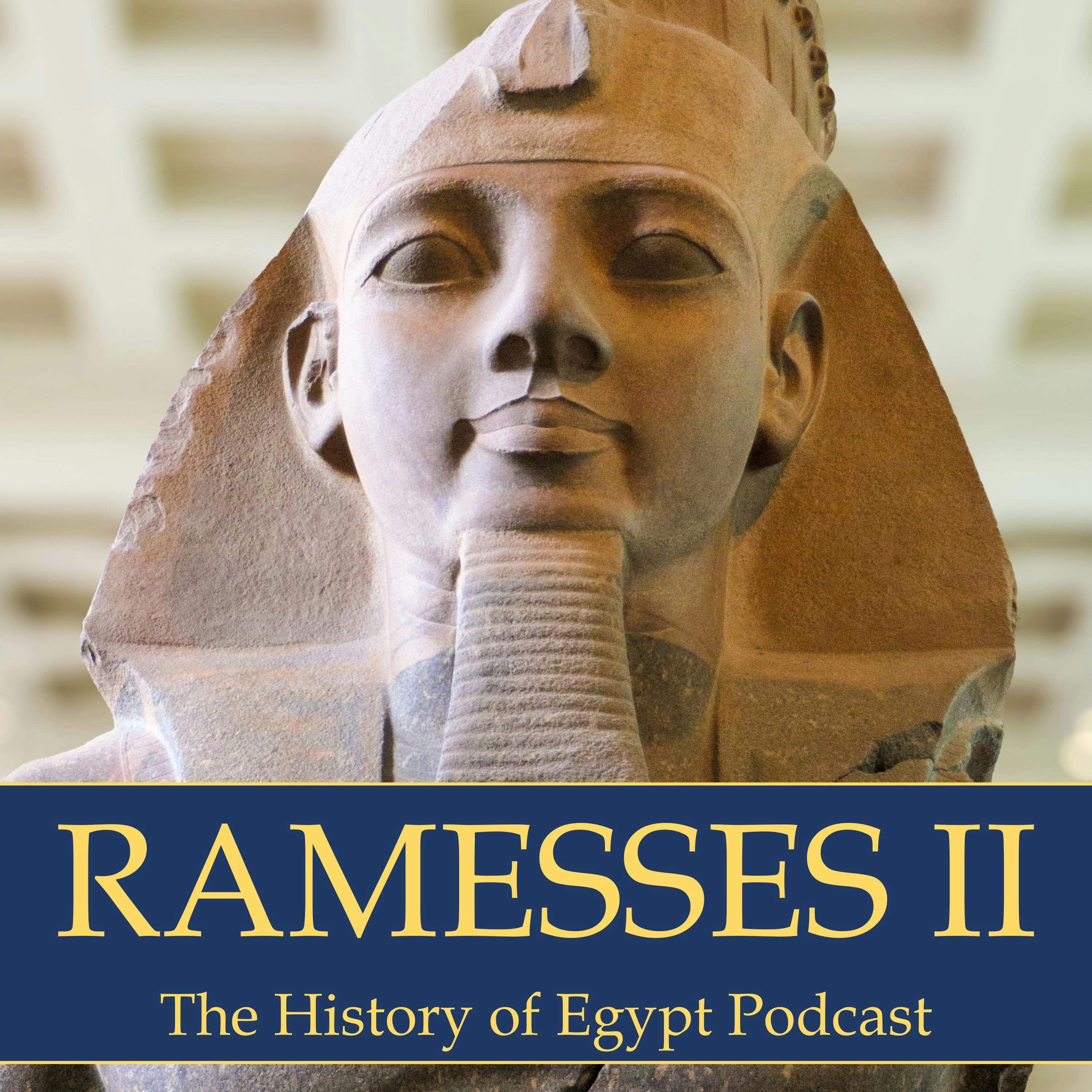
Ramesses II defends his borders. In the early years of his reign, Ramesses focussed on home defence. His army established new forts at remote locations along the western Delta and Mediterranean Coast (Marmarica). Traces of this work can be found at famous locations like el-Alamein, Mersa Matruh, and Zawiyet Umm el-Rakham, the latter of which has been the object of detailed excavation in recent decades. Apparently, Ramesses was fortifying his frontiers, guarding the western approaches to Egypt.
Soon after, the pharaoh went forth on campaign. His target? The cities of Canaan and Amurru, in modern-day Lebanon. Along...
Feed Swap: The Ancient World - Ages
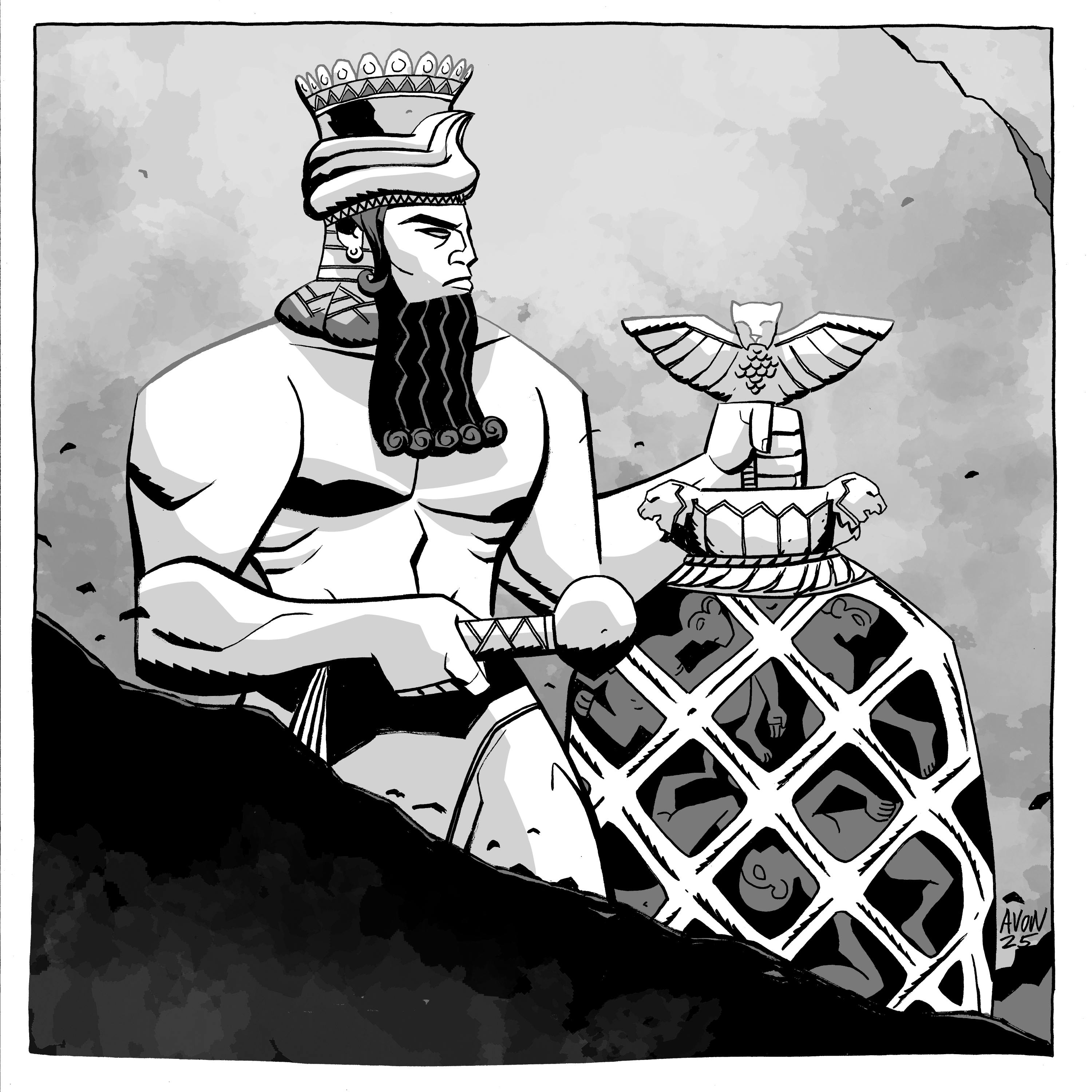
Fellow podcaster Scott Chesworth, from The Ancient World has a new season. I’m excited to introduce “The Ancient World – Ages”, a series covering the Early Bronze Age Collapse (c. 2200 BC) and the remaking of Southwest Eurasia.
In this feed swap, you’ll hear episode A3 – The Kings of Kish. It covers the period c.2900 BCE and 2350 BCE, also known as the Early Dynastic Period in Sumer. A time of kings, emerging from legends. Figures like Gilgamesh, burial sites like the Royal Cemetery of Ur, and the legendary conflict between the gods Lagash and Umma, recorded on the Stela of...
210: Ramesses II The Eyes of Ra, The House of Life

Ramesses goes back to school. Luxor Temple is a magnificent monument, in a city full of them. The sanctuary you visit today is, in large part, the work of Ramesses' early reign. New pylons, colossal statues, obelisks, and dedicatory texts provide the testament to the young pharaoh's work. Exploring these, we also get a surprising insight into temple archives and educational facilities, embodied in the Per-Ankh / House of Life...
Outro music: Jeffrey Goodman, "Prophetic Harps of Amun-Ra," used with permission.
Website: www.egyptianhistorypodcast.com.
Support the show via Patreon www.patreon.com/egyptpodcast.<...
209: Ramesses II vs the Sea Peoples

Delta raiders. Decades before their famous migrations, the "Sea Peoples" were already active and visible in the eastern Mediterranean; and Ramesses II had his own dealings with these groups. In year 2 of his reign, Ramesses II (Usir-Ma'at-Ra) dealt with a coastal raid by the Sherden, who came from the "islands in the midst" of the sea (which the Egyptians called the "Great Green"). The battle, and its aftermath, is referenced in several of Ramesses' inscriptions. We explore this curious first chapter in the Sea Peoples' story...
Music: Michael Levy "Odysseus and the Sirens” www.ancientlyre.com
...
Thutmose III & Hatshepsut: The New Kingdom Defined with Prof. Aidan Dodson
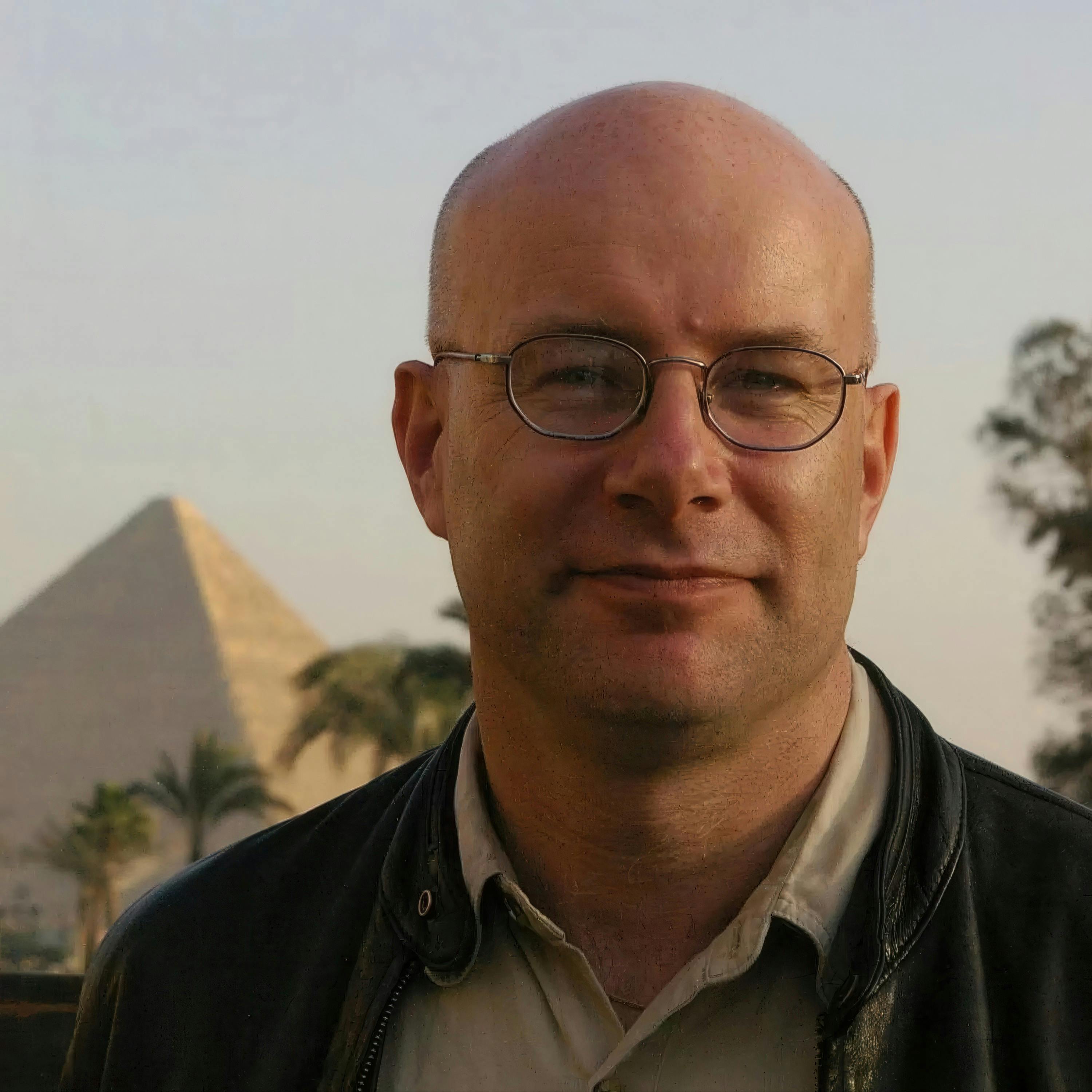
The new royal tomb, and how two 18th Dynasty rulers defined the "New Kingdom" as we know it. Prof. Aidan Dodson is a dedicated and prolific scholar, whose research covers many facets of ancient Egyptian history (and even WW1 warships!) His latest book, Thutmose III & Hatshepsut: Pharaohs of Egypt - Their Lives and Afterlives looks at how these two monarchs, and their followers, defined many of the aspects of "pharaonic culture" as we imagine it. Along the way, we also discuss the new royal tomb, its significance, and its connection to these famous figures.
Prof. Aidan Dodson...
208: Ramesses II The Oracle & The Sphinx

A death at Karnak, and a lion amongst men. In regnal year 1 (c.1292 BCE), Ramesses II was at Abdju / Abydos. While there, he appointed a new First Priest of Amun (Hem Netjer Tepy en Imen). He chose his candidate by consulting the deity directly, engaging in an oracle with Amun to choose the best option.
Shortly after, Ramesses departed Abdju and continued his northward journey. Eventually, he came to Giza, home of the Great Sphinx and the deity that inhabited it...
The History of Egypt Podcast:
Website: www.egyptianhistorypodcast.com.
Support...
207: Ramesses II Shadow of Two Fathers

Ramesses had a lot to plan for, in his first year of rule (c.1292 BCE). Staying in Waset / Luxor, the new pharaoh began building work on his tomb (KV7) and his memorial temple (The Ramesseum). Archaeological records testify to both of these projects. Then, the King immortalised his late father, the Osiris Sety I, in scenes of worship at Karnak. Finally, Ramesses left Waset, heading north; but he stopped at Abdju / Abydos on his way. There to commune with Osiris (Sety) once more, and to address some glaring issues...
Chapters:
00:00 Building KV7 and the Ramesseum<...
206: Ramesses II Usir-Ma'at-Ra

In the annals of Egyptian history there is no one quite like Ramesses II. He is arguably the most famous, or infamous, of Egypt’s pharaohs. His reign would be long (67 years!) and his influence would be incalculable. In this episode, Ramesses "appears" as King, following the death of his father (III Shemu 27). He chooses his royal names (Usir-Ma'at-Ra, Ramesses Beloved of Amun). He buries Sety, in the Valley of the Kings. And he goes before the gods to receive blessings and power...
Episode chapters:
00:00 - Introduction to Ramesses II
04:20...
Sety's Borrowed Coffin with Dr. Peter Lacovara
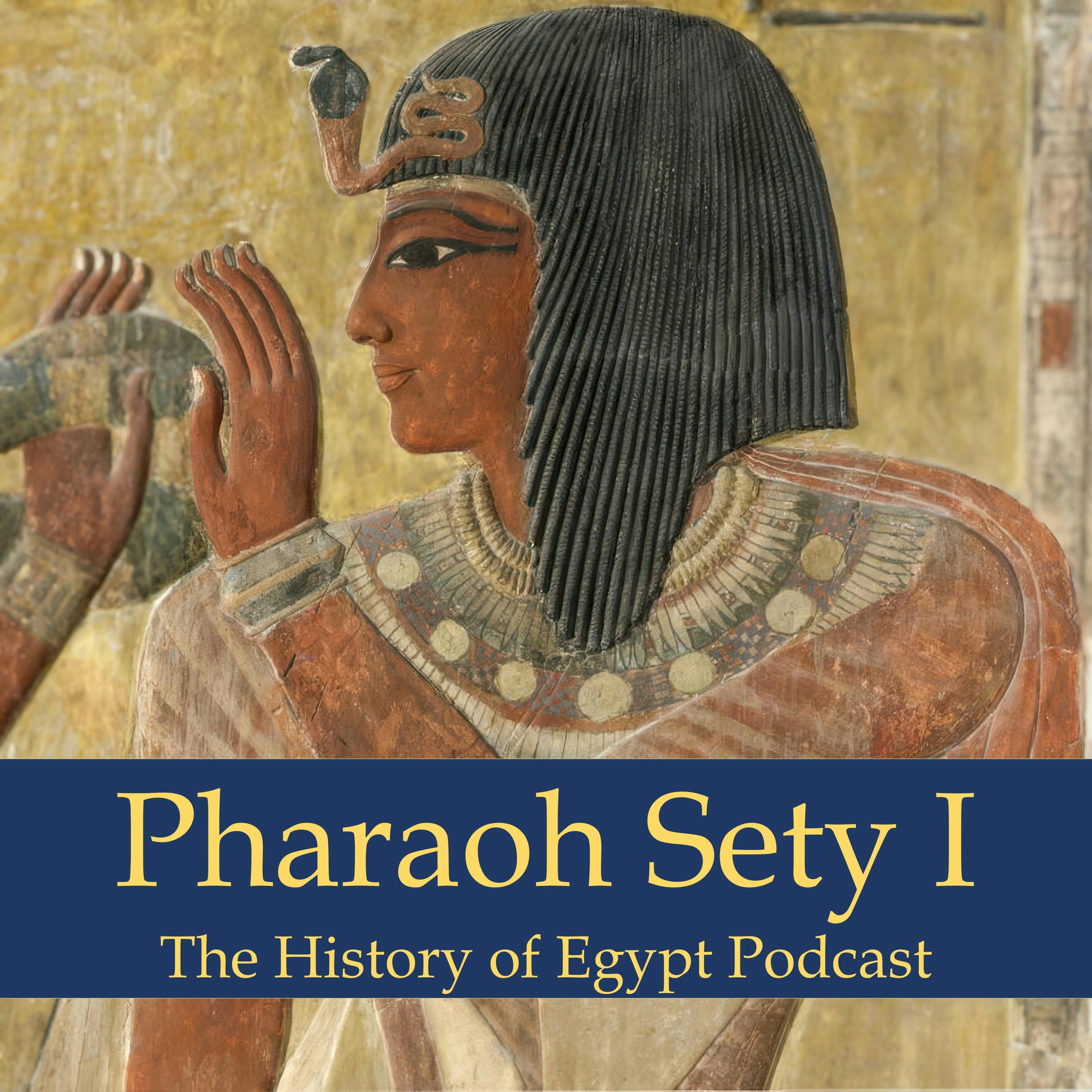
The coffin of Sety I (now in the NMEC) was probably reworked from an earlier piece, during the reburials in DB320 (the royal cache). But how can we tell? Dr. Peter Lacovara explains.
Dr. Lacovara's website https://peterlacovara.com/
Video version available at Patreon www.patreon.com/egyptpodcast
Video version available on YouTube https://youtu.be/6e1fauj4qPA
Learn more about your ad choices. Visit megaphone.fm/adchoices
205: Sety I and the Finest Royal Tomb

Sety’s royal burial. Valley of the Kings tomb 17 (KV17) came to light in October 1817. Discovered by a team of Egyptian workers, employed by Giovanni Belzoni, the tomb is the most beautiful, and one of the largest, in the entire Valley.
==
Learn more about KV17:
3D Tour by Mused: https://mused.com/tours/926/tomb-of-seti-i-valley-of-the-kings/
Theban Mapping Project https://thebanmappingproject.com/tombs/kv-17-sety-i
Photos: Kairoinfo4u via https://www.flickr.com/photos/manna4u/albums/72157687439529835/
KV17 at Wikimedia https://commons.wikimedia.org/wiki/Category:KV17
==
...Scan Technology Reveals Hidden Chambers at Giza?
Approach with caution. In March 2025, a group calling itself the “Khafre Research Project” posted visual information online about the pyramid of Khafra at Giza. The group claims that Synthetic Aperture Radar (or SAR) scans at Giza have revealed “structures” beneath the pyramids. Using digital modelling (and some AI), they suggest that Khafra’s pyramid and the Giza plateau hide many more chambers. There are a couple facets to this.
The 2022 article publishing raw data about SAR scanning at Giza: https://www.mdpi.com/2072-4292/14/20/5231
Overview of claims and evidence: https://ww...
Another Royal Tomb! Abydos | Hatshepsut | Bastet Tooth and more discoveries
News from the Field (2025) Part 2. The past excavation
season has been extraordinarily productive. Beyond the new royal tomb of
Thutmose II we also have a SECOND royal tomb, at Abydos! The Grand Egyptian
Museum is finally opening in full. And archaeological teams throughout the land
have uncovered wonderful things. We also remember some prominent scholars who
passed away recently.
Chapter times and links to discovery reports with photos:
00:22 – New tombs at Asasif https://southasasif.wordpress.com/2024/11/01/discovery-announcement/.
02:21 – New tombs at Dra...
204: Sety's Last Journey

After a reign of approximately eleven years, the Horus Men-Ma’at-Ra (Sety I) passed to the west. He died in reasonably good health, and studies of his mummy reveal a tall, physically robust individual. So, what killed him? We explore these questions, and the history of his Memorial Temple, where the King’s body lay in state ready for burial…
Music by Bettina Joy de Guzman www.bettinajoydeguzman.com.
Music and interludes by Keith Zizza www.keithzizza.net.
Music by Luke Chaos www.chaosmusick.com.
Additional music “Sety’s Funeral” by Ihab Mahna h...
Egypt's New Royal Tomb Discovery with Dr. Chris Naunton. What's next?
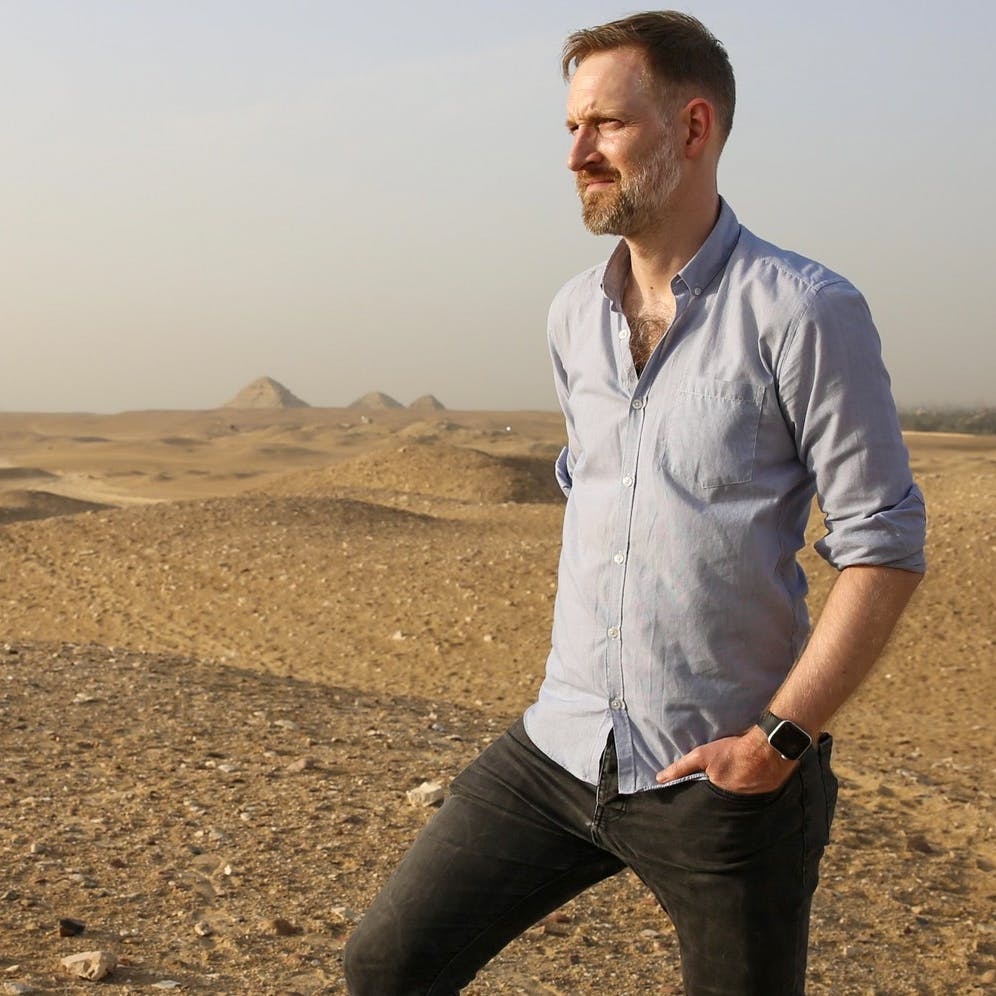
News from the Field 2025, Part 1. In February 2025, the breaking news was the discovery of a royal tomb. An archaeological mission working in Luxor are confident they have located the grave of King Thutmose II. The tomb itself was discovered in late 2022, and the team announced it publicly in 2023. I reported on that initial find in the news roundup for that year. Now, another season has passed, and the team’s work has come to fruition...
I am also joined by Dr. Chris Naunton, former Director of the Egypt Exploration Society, who was discussed the new...
203: Rise of a Vizier

Paser, servant of Sety I and Ramesses II (c.1300--1270 BCE). In the later years of his reign, King Sety promoted one of his servants to the highest political/government office. Paser, the Vizier, enters our story...
Website: www.egyptianhistorypodcast.com.
Support the show via Patreon www.patreon.com/egyptpodcast.
Make a one-time donation via PayPal payments.
Music and interludes by Keith Zizza www.keithzizza.net.
Music and interludes by Luke Chaos www.chaosmusick.com.
Learn more about your ad choices. Visit...
Ramessid Biographies with Prof. Elizabeth Frood

Elizabeth Frood is Associate Professor of Egyptology and Director of the Griffith Institute at the University of Oxford, UK. In a lively discussion, Dr. Frood shares her insights into ancient lives and how people living in the non-royal sphere approached their immortality. Statues, texts and graffiti show us the minds of these people and how they depicted their concerns, beliefs and ideas. It's a great conversation and I think you'll really enjoy it!
Prof. Frood's book: Biographical Texts from Ramessid Egypt, 2007.
Academic pages:
https://www.orinst.ox.ac.uk/people/elizabeth-frood https://oxford.academia...202: A Valley of the Queens & The Womb of Hathor

The Place of Beauties (Ta-Set-Neferu). In the reigns of Ramesses I and Sety I (c.1304—1292 BCE), the Valley of the Queens finally earned its moniker. Having been a burial ground for royal children and courtiers, the wadi south of Deir el-Medina now began to host ruling women. In the days of Sety I, the Queen Mother Sitra and the Queen Tuya both received new tomb constructions in this site. Their monuments include evocative passages from the Book of the Dead (Chapter 17), and hints of the wonders to come in future generations…
Tombs discussed in this...
A Memory of Gods with Dr. Tamara Siuda
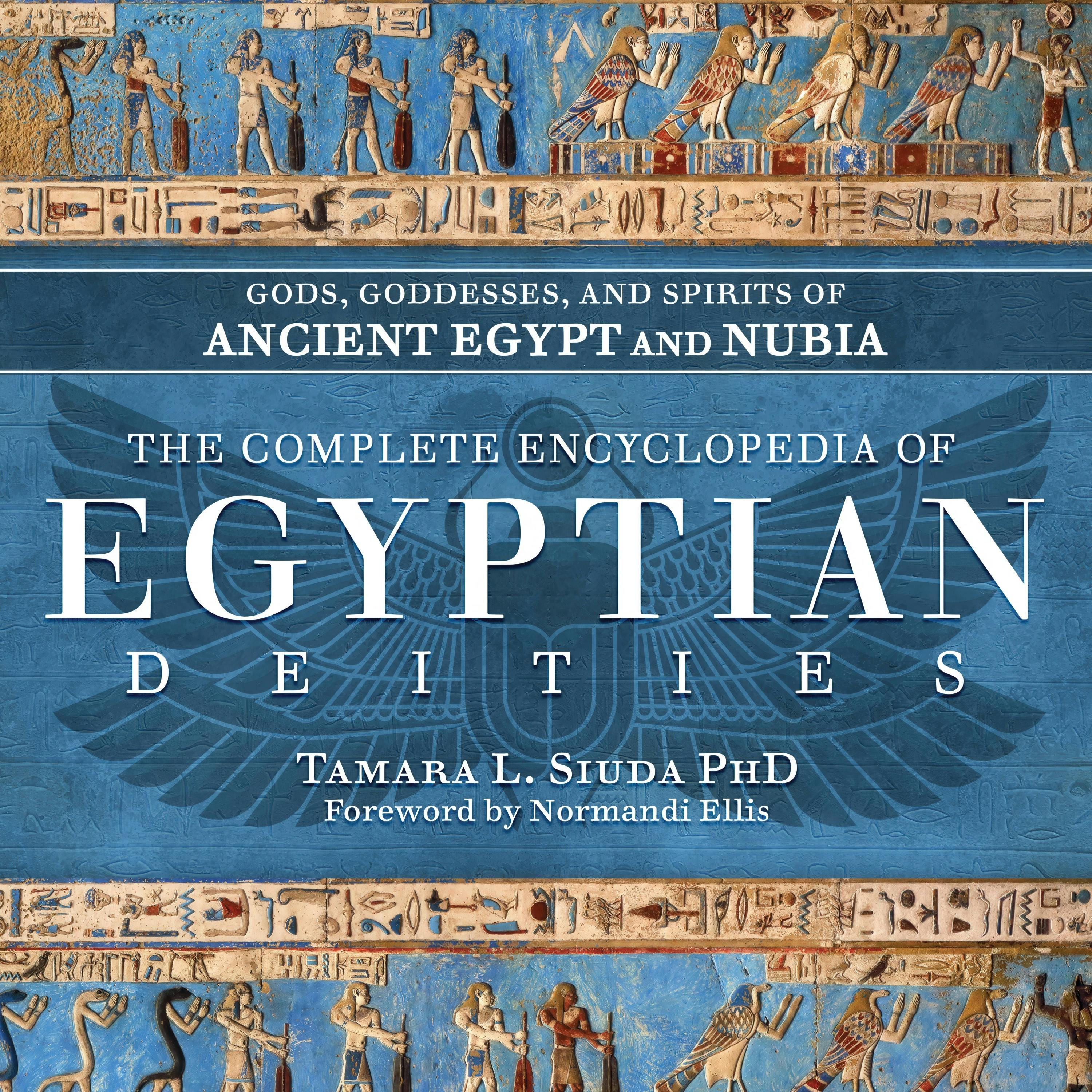
Understanding the deities requires us to move beyond inherited preconceptions and prejudices. Fortunately, there are many gods worthy of the effort. From the deified Sphinx Horemakhet, to the meme-lord Medjed, to the deified lover-boy Antinous, the pantheon is rich in variety and personalities. It is a subject that today’s guest, Dr. Tamara L. Siuda, has devoted a great deal of time. Her new book, The Complete Encyclopedia of Egyptian Deities (2024) is a comprehensive guide to many of these figures…
Dr. Tamara Siuda’s website: https://tamarasiuda.com/
For a limit...
201: When Hathor Destroyed the World (The Book of the Sky Cow)
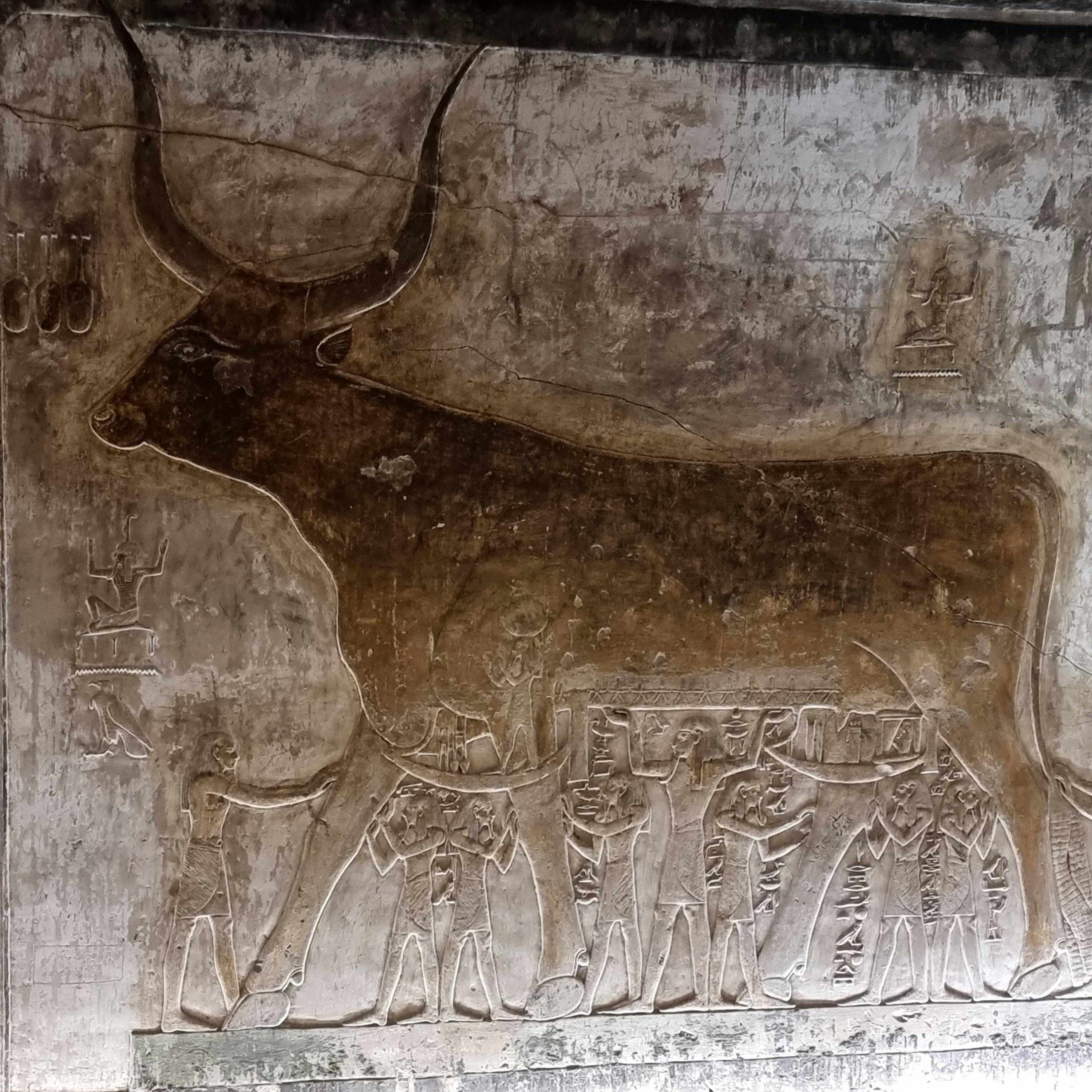
The Book of the Sky Cow. In the waning years of the 18th Dynasty (the reign of Tut’ankhamun) royal artisans began decorating tombs and funerary equipment with a new text. Sometimes known as “The Destruction of Mankind,” the book tells of a distant age, when Ra ruled on earth. But as the sun-god aged, a group of humans perceived his weakness, and plotted rebellion. Faced with an uprising, Ra marshalled his supporters and sent forth an enforcer. The goddess Hat-Hor (and her alter ego Sakhmet) began to wreak havoc upon the lowly, wayward humans…
The Bo...
Dendera: Temple of Time with José M. Barrera
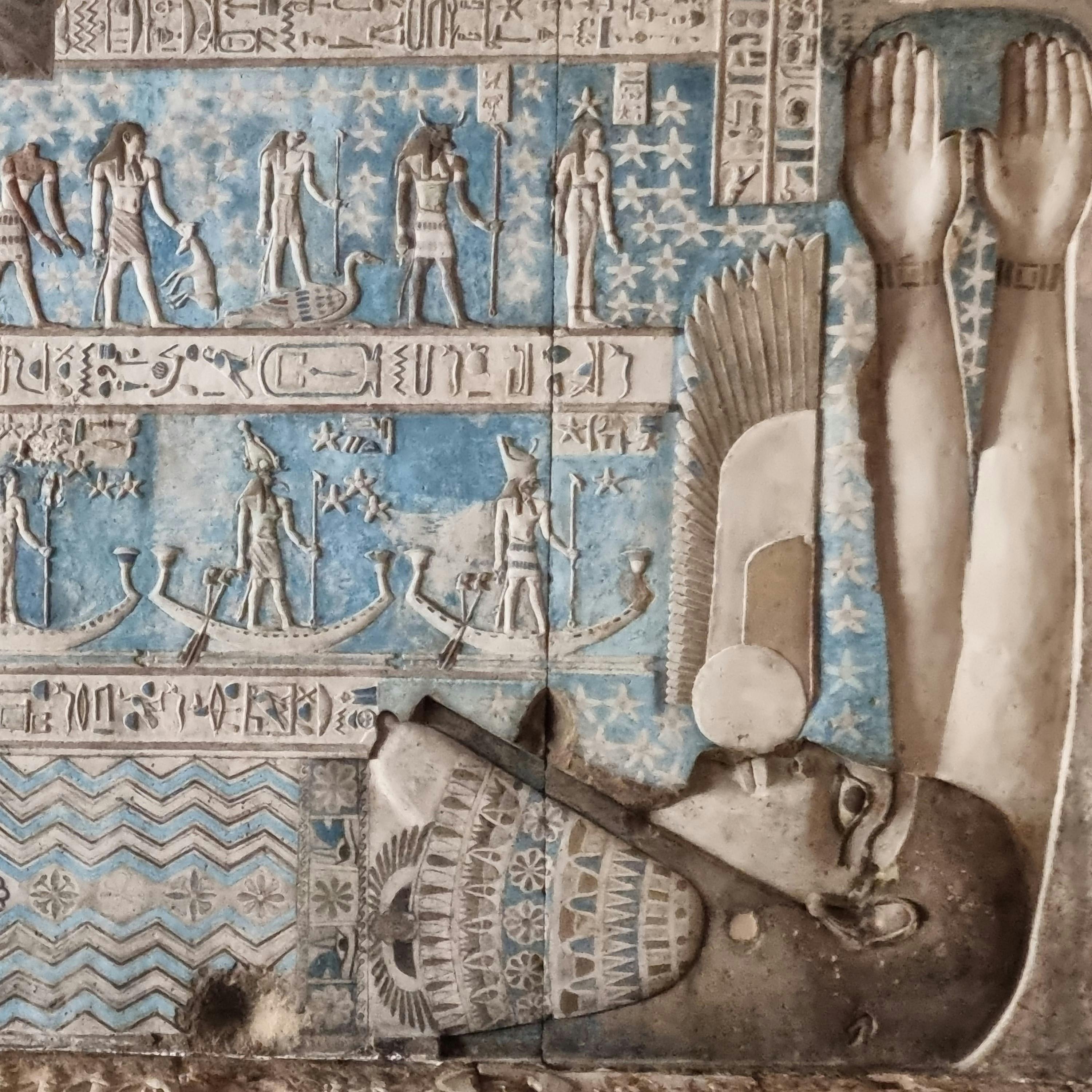
Hathor's temple at Dendera is one of the best in Egypt. Constructed in the late 1st Millennium BCE (but with roots stretching back to the Old Kingdom), Hathor’s house preserves amazing art, hieroglyphs, and secrets. It is a temple that today’s guest, José M. Barrera, devoted a great deal of energy to documenting. The result is a wonderful study of Hathor’s celestial realm…
See José's amazing photography of Dendera's ceiling and learn more about his book Dendera: The Temple of Time (2024) at his website: https://josemariabarrera.com/dendera/
...
200: How to Make Your Own Tomb

Livestream recording. The tombs of Deir el-Medina are some of the most vibrant and beautiful in Waset (Thebes). How did they build them, which artists decorated them, and how did folk like Sennedjem pay for the construction and furnishing?
Video version available at Patreon, with extended artistic discussion.
Website: www.egyptianhistorypodcast.com.
Support the show via Patreon www.patreon.com/egyptpodcast.
Make a one-time donation via PayPal payments.
Intro music by Bettina Joy de Guzman www.bettinajoydeguzman.com.
Music and interludes by Keith Zizza www.keithzizza.net.
New Year, New Home (Moving Countries)
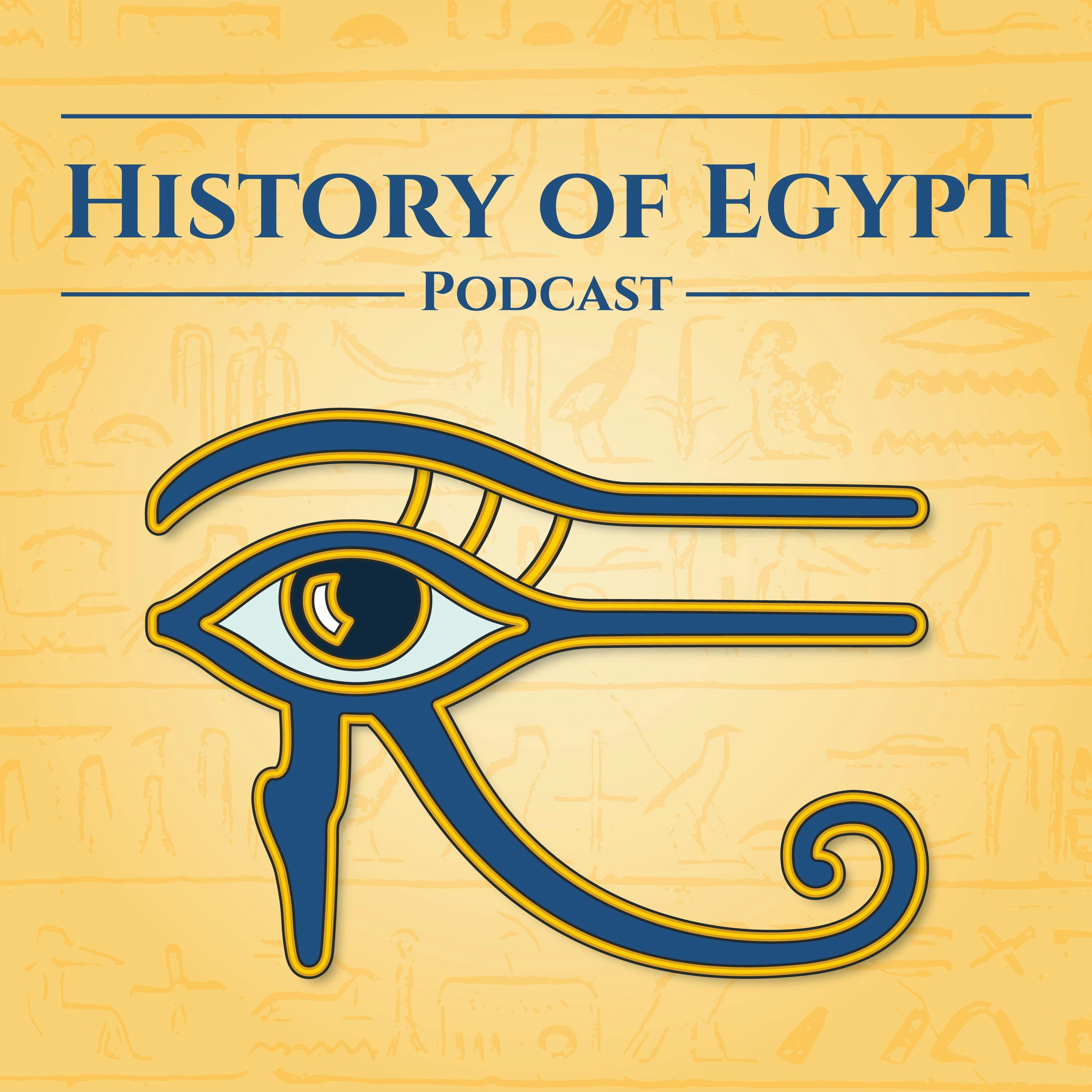
New Year, New Home. My wife and I are moving to the UK in February 2025. How will this improve / affect the podcast? Details inside.
Next livestream: “How to Make Your Own Tomb,” based on the artists’ tombs at Deir el-Medina. Held on YouTube live: https://youtube.com/live/500MMqMUlH8.
Date and time zone conversion:
Auckland: Sun, 29 Dec 2024 at 9:00 a.m. NZDT
Sydney: Sun, 29 Dec 2024 at 7:00 a.m. AEDT
Cairo: Sat, 28 Dec 2024 at 10:00 p.m. EET
Berlin: Sat, 28 Dec 2024 at 9:00 p.m. CET
London: Sat, 28 Dec 2024 at 8:00...
199: The Winter War

Sety’s final campaign. In winter of year 8 (approx. December 1296 BCE), the King of Egypt Sety I received news: rebellion in the south. In a land called Irem, now in modern Sudan, locals were resisting Egypt’s monarch. Sety gathered an army of infantry and chariots and set off to war. The story is told by Egyptians participating in the event, and by monuments erected to commemorate it…
See the temple of Beit el-Wali at https://commons.wikimedia.org/wiki/Category:Temple_of_Beit_el-Wali
Music by Bettina Joy de Guzman www.bettin...
198b: The Tomb Builders in the Age of Sety I

Livestream recording. The village of Deir el-Medina first arose in the 18th Dynasty (c.1550—1310 BCE), but the historical records really multiply in the 19th and 20th Dynasties (c.1310—1070 BCE). In this livestream recording, I set the scene for the village and introduce you to some of its inhabitants. We explore houses and families, and a couple of intact tombs that shed light on the inhabitants…
Video version available at https://www.patreon.com/posts/livestream-deir-117598390.
Deir el-Medina Village
Museo Egizio excavation photos: https://archiviofotografico.museoegizio.it/en/archive/theban-region/deir-el-medina/excavations-at-the-village-temple-and-chapels/?photo=C00949 Kairo info4u...198: Servants in the Place of Truth (The Tomb-Builders)
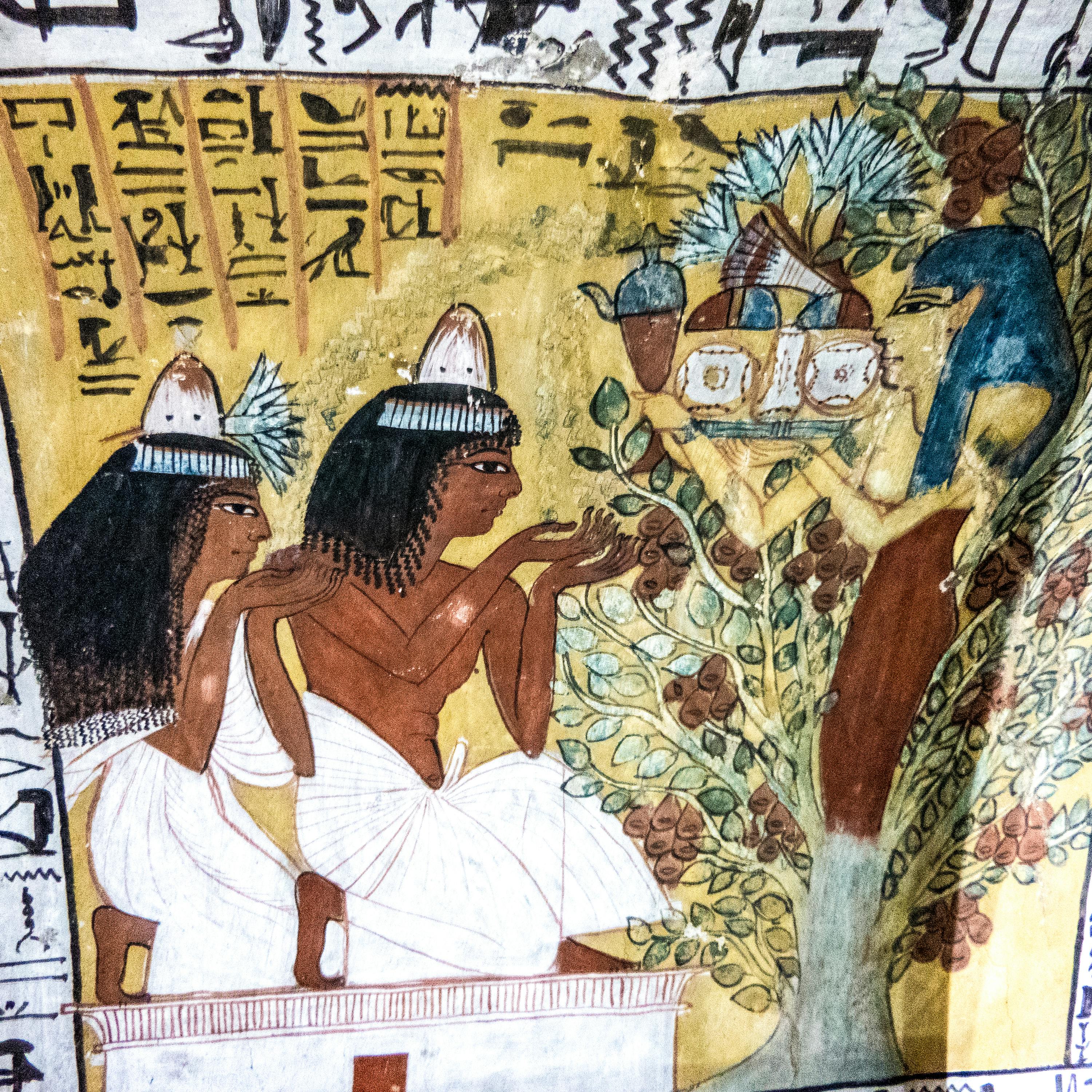
Deir el-Medina’s Golden Age (Part 1). In the age of Sety I, the village of the tomb-builders expanded significantly. Likewise, our evidence for daily life, families, households, and business begins to proliferate. Historians can identify individuals from tombs and connect them with specific houses. We can track their movements, as they form relationships, get married, have children, and pass things to their descendants. Written records tell us about the village’s operations, including their funding from the pharaoh’s government. Around 1300 BCE, we stand on the threshold of some truly detailed stories…
DEIR EL-MEDINA LIVESTREAM, open to the publi...
197: How to Make a Pharaoh's Tomb

Sety I in the Valley of the Kings (Part 1). Archaeological remains and ancient texts reveal a great deal about tomb-building in the 19th and 20th Dynasties (c.1303—1070 BCE). Records, artefacts, and art all combine to inform us of the workers and their practices. In this episode, we use the sepulchre of Sety I (KV17) as a case-study, to understand an ancient tomb project.
Explore the tomb of Sety I in a 3D Walkthrough by MuseEd https://mused.com/guided/926/tomb-of-seti-i-valley-of-the-kings/
Archaeological information for Sety's tomb at the Theban Mapping Project: https://thebanmappingproject.com/index.php/to...
Sety, Thutmose, and Royal Coffins (with Prof. Kara Cooney)

In 1881, a remarkable discovery took place in Luxor, Egypt. In the hills of Deir el-Bahari, a secret tomb held the reburied mummies of Egypt’s famous pharaohs. Figures like Sety I, Ramesses II, Thutmose III, and Amunhotep I lay in rest, in carefully hidden coffins. However, the caskets themselves hold many secrets, which today’s guest has spent years exploring.
VIDEO VERSION available on YouTube.
Interview guest:
Prof. Kara Cooney (UCLA) presents Recycling for Death:Coffin Reuse in Ancient Egypt and the Theban Royal Caches. Part of the UCLA Coffins Project https://arce.org/proj...196: The Golden Path

The plan of an honest ruler. Around 1300 BCE, as today, gold was big business. King Sety I personally led an expedition into the eastern desert, to establish a new mining operation. Back in the Nile Valley, high-ranking officials leave monuments testifying to their work delivering, securing, and recording that gold. And thanks to art and artefacts, we can reconstruct the items these gold-workers produced. From the Red Sea Mountains to the Temple of Abydos, we follow the paths of gold…
Logo image: Silver and gold statuette of a New Kingdom pharaoh, possibly Sety I (Louvre).
Fo...
195: A Quest for Gold

Sety in the Desert. Around 1300 BCE, King Sety led an expedition into the Red Sea hills. His purpose? Gold. The King brought soldiers and charioteers out to mine precious metals for his treasuries. The journey was difficult, traversing a dry and rocky landscape far from the comforts of home. Fortunately, Sety left detailed descriptions of the event; and art and artefacts from this era allow us to reconstruct the journey...
Episode details:
Logo image: Soldiers make camp, setting up tents for commanders. Tomb of Horemheb at Saqqara (Martin 2016). Website: www.egyptianhistorypodcast.com. Support the show via...194: A Prince of Egypt (feat. Prof. Peter Brand)
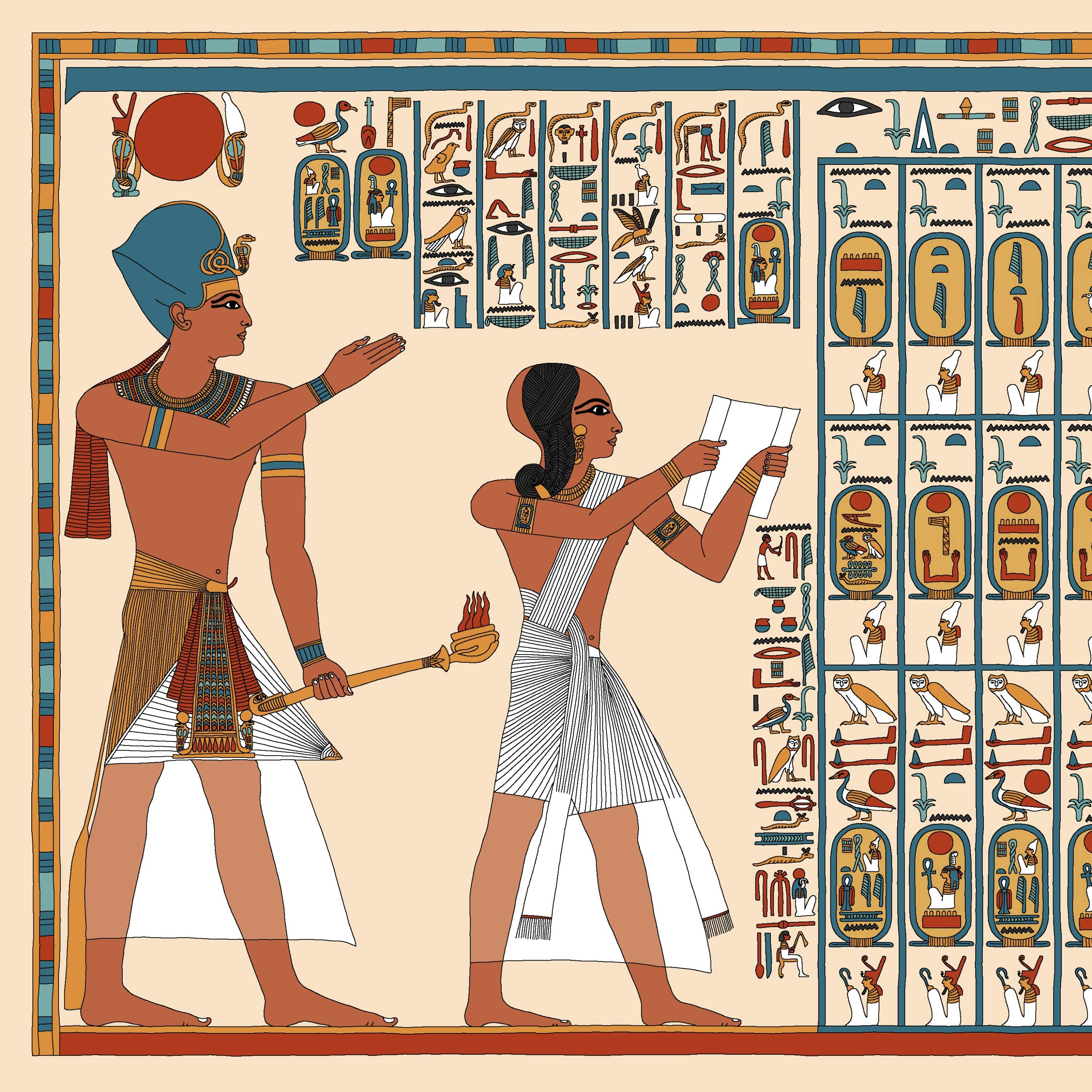
Ramesses Rising. Traditionally, Egyptian princes are almost invisible. The pharaohs downplayed the presence of their sons, to reduce political competition and maintain religious order. Sety I (c.1300 BCE) changed this habit. In art and monuments, he promoted young Ramesses II to a position of prominence and power. The exact nature of this promotion is slightly controversial among Egyptologists. In this episode, we explore Ramesses’ rise and some of the thorny issues. Additionally, Prof. Peter Brand joins us to discuss some of the harder questions on these period.
Peter Brand, The Monuments of Sety I (2000), available free at Academia.ed...Cleopatra (All Seven of Them) with Prof. Lloyd Llewellyn-Jones
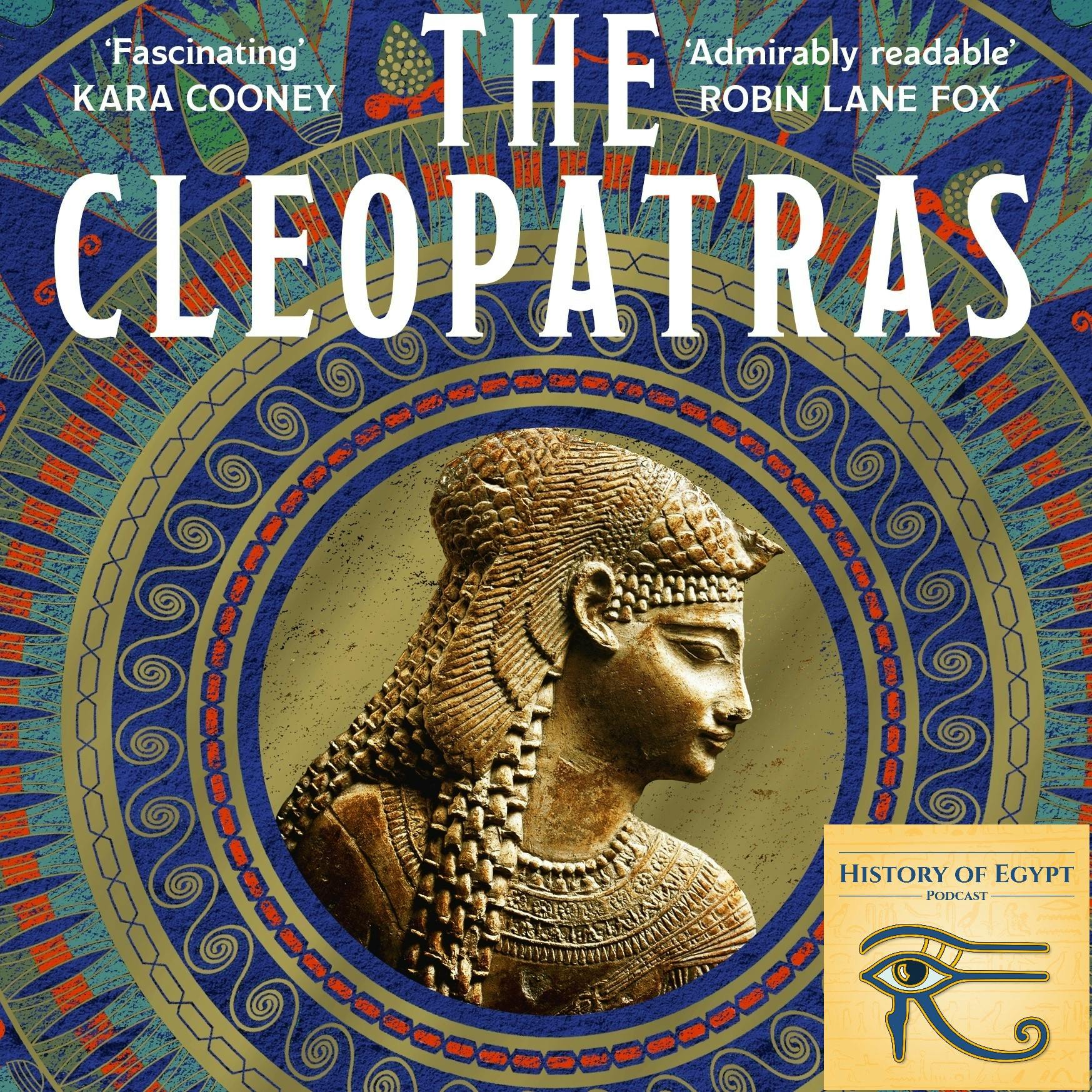
Recorded May 2024. A name more famous than its owners. The Cleopatras of Egypt (all seven of them) were remarkably influential women and rulers. Frequently taking up power and responsibilities far beyond their more famous husbands (the Ptolemies), the seven Cleopatras of Egypt (and even more in the wider Hellenistic world) are worthy of greater attention and respect. In this interview, Prof. Lloyd Llewellyn-Jones of Cardiff University introduces these figures and his new book The Cleopatras: Forgotten Queens of Egypt.
Author details:
Lloyd Llewellyn-Jones, The Cleopatras, 2024. Available in hardback, paperback, ebook, and audiobook (read by the author...193: Slaying the Bull of Seth (Ramesses’ First Rodeo)
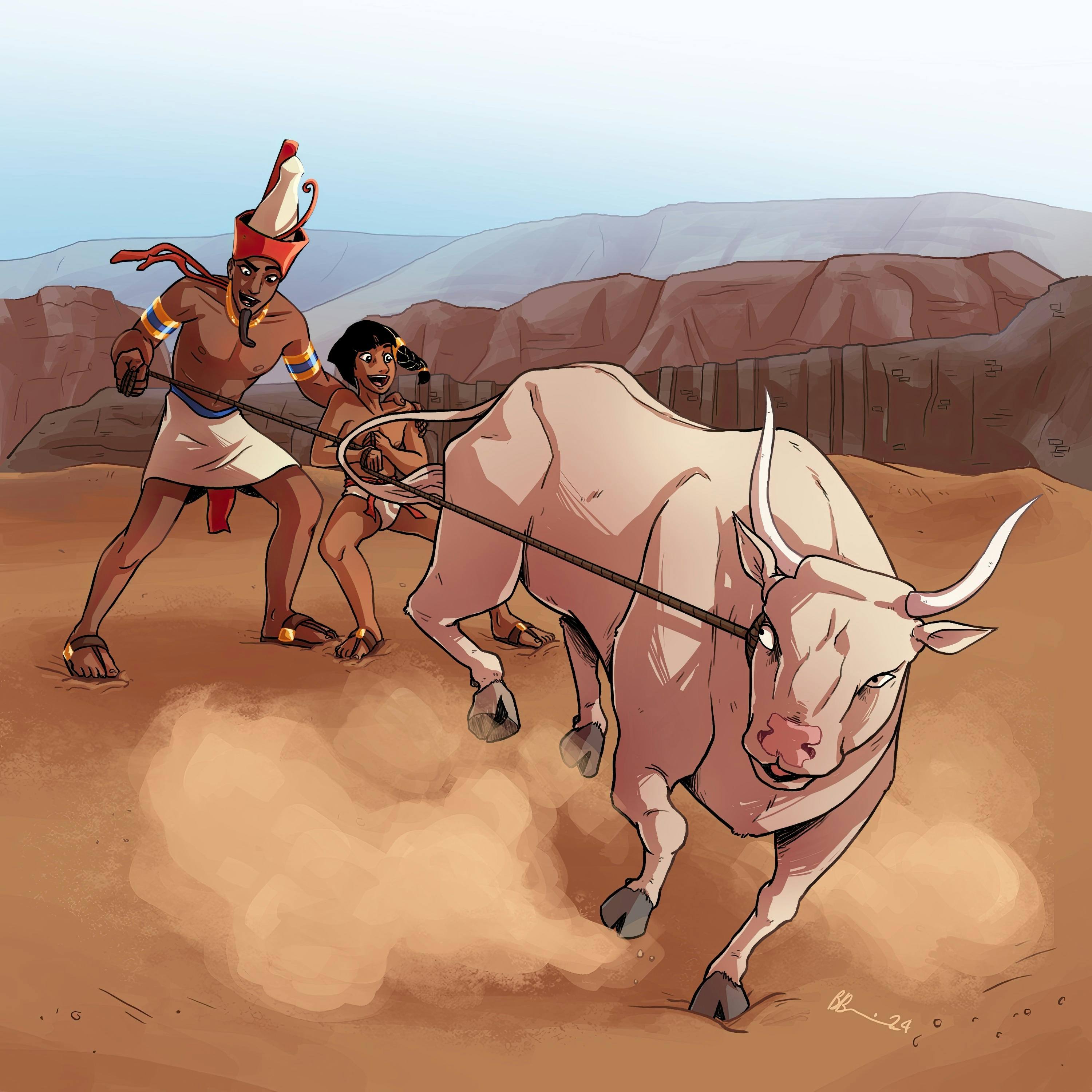
In the Temple of Sety I at Abydos, an out-of-the-way corridor preserves a unique image. The King of Egypt, and his eldest son, wrangle and subdue a bull. This scene appears simple, at first glance. But it has a wealth of deeper symbolism and meanings. In this episode, we explore the idea of Bulls as images of power and violence, and their relationship with gods like Osiris and Seth…
Episode logo: Ramesses and the Bull, by artist Brenna Baines (commissioned by The History of Egypt Podcast). Full version available on my Patreon (link below). The Bull Hall photos by...A Musical Book of the Dead (with Nemuer and Dr. Christian de Vartavan)

Remember “Going Forth by Day”? It’s back! In song form. Many creative projects have explored themes around the Egyptian underworld. But in 2023, the Czech band Nemuer has taken a novel approach. Their album, Book of Going Forth by Day is based on original funerary papyri; and for the pronunciation of the Egyptian language, they consulted with Egyptologist Dr. Christian de Vartavan. This gives us an opportunity to explore excerpts from the Book of the Dead from a new perspective and connect more deeply with the ancient language.
The podcast has covered the Book of the Dead previo...
192b: Seth's Lore
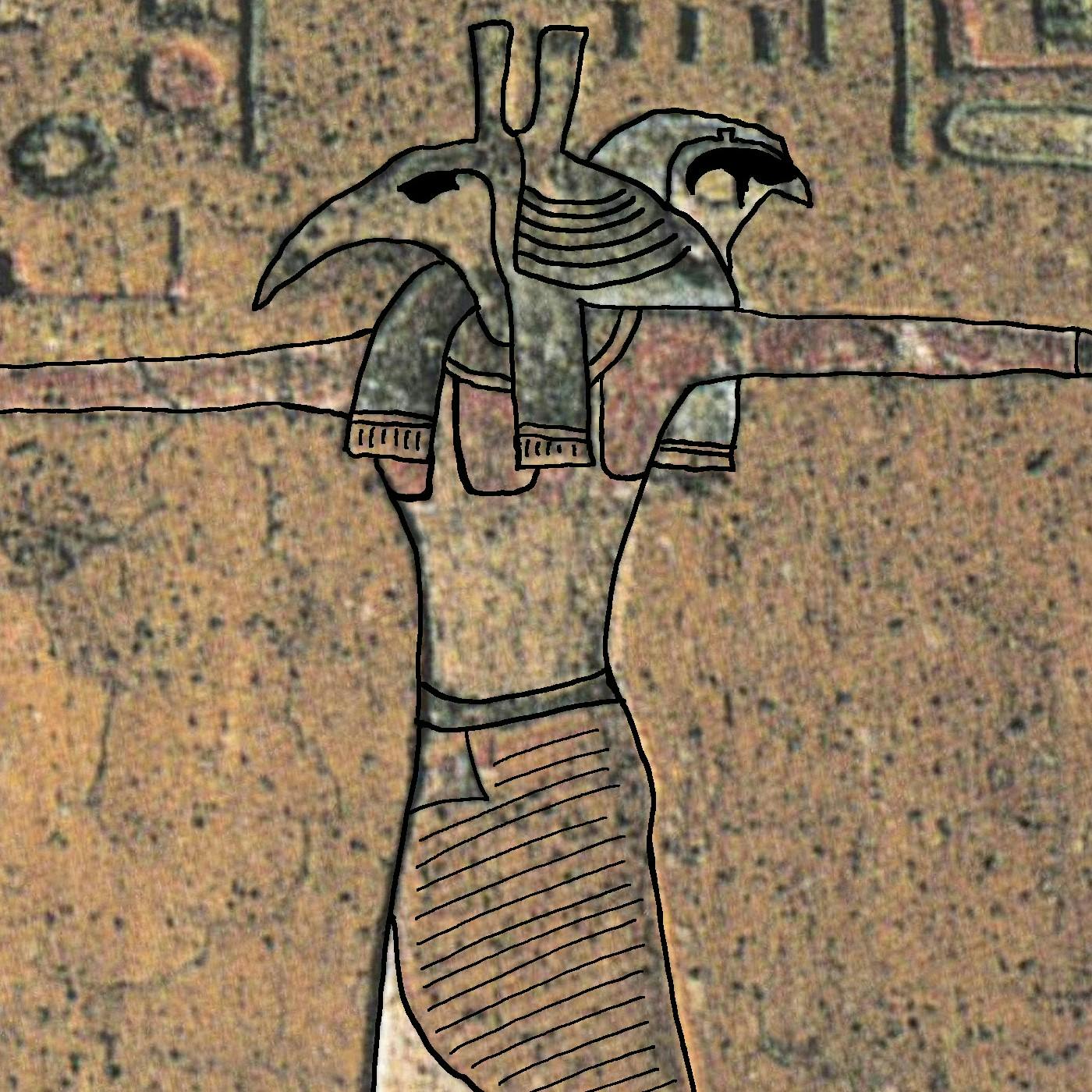
Warrior, protector, murderer. By 1300 BCE, the Egyptian god Seth had become a complex and multi-faceted deity. Chaotic and destructive, but not "evil," Seth played an important role in the gods' realm and our own. This legend developed and evolved over centuries, from the earliest religious literature to the imperial age. In this episode, we explore Seth's role, appearances, and descriptions in the Pyramid Texts, Coffin Texts, Book of the Dead, Amduat, and Book of Gates. And we try to get to grips with a god who was (quite literally) two-faced...
Episode details:
Date: c. 2400 - 1300 BCE...